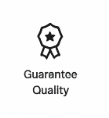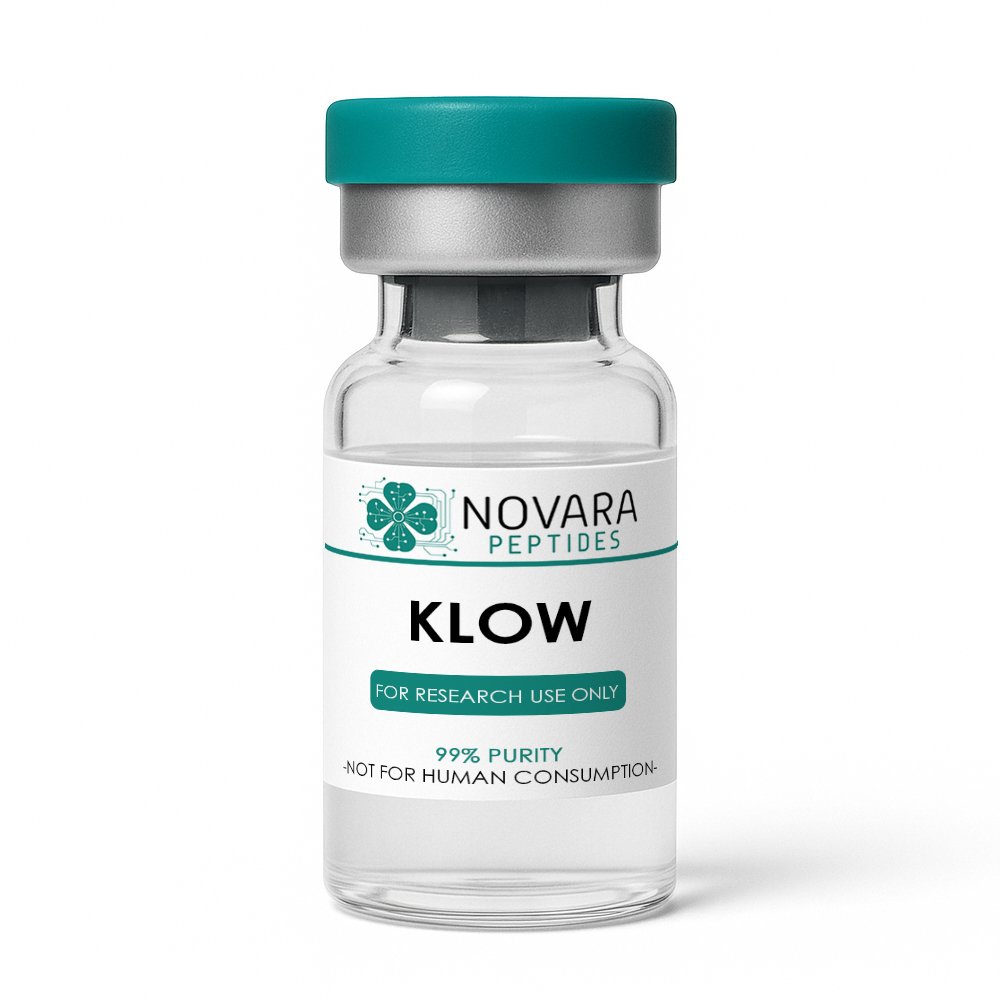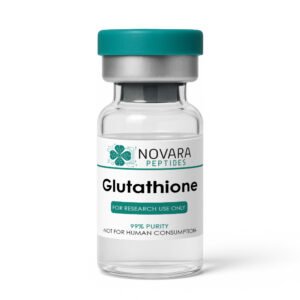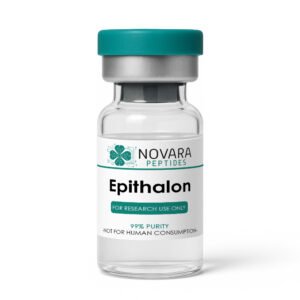KLOW – 80mg
$ 119.00
All products are for laboratory research purposes only. Not for human consumption, medical, or veterinary use. ION Peptides does not condone or support the use of peptides outside of controlled scientific research. By purchasing, you acknowledge that you are a qualified researcher or institution. You must be 21 or older.




KLOW (GHK-Cu + BPC-157 + TB-500 + KPV Blend)
Research-Grade Regenerative Peptide Blend
Tagline: Enhanced Healing & Inflammation Modulation
Product Description
KLOW is a research peptide blend that combines GHK-Cu (Copper Tripeptide-1), BPC-157 (Body Protection Compound-157), TB-500 (Thymosin Beta-4 fragment), and KPV (Lys-Pro-Val) into a single synergistic formulation. This advanced combination builds on the “GLOW” blend by adding KPV to further target immune modulation and anti-inflammatory pathways.
Researchers study KLOW to explore its potential in wound healing, angiogenesis, skin regeneration, connective tissue repair, gut health models, and chronic inflammation studies. By combining four complementary peptides, KLOW offers a robust model for multi-pathway regenerative research.
For Laboratory and Scientific Research Use Only. Not for Human Consumption.
Why Researchers Choose KLOW
Comprehensive Regeneration: Targets collagen production, angiogenesis, inflammation control, and cellular migration simultaneously.
High Purity & Stability: Each component is ≥98% pure, blended under controlled conditions.
Time-Saving Solution: Combines four peptides into one ready-to-reconstitute vial for consistent dosing.
Synergistic Effects: Produces broader research outcomes than single-peptide protocols.
Batch Verified: Identity, purity, and potency confirmed for every lot.
Important Note
For laboratory and scientific research only. Not for human consumption, veterinary use, or diagnostic purposes.
| Composition | GHK-Cu, BPC-157, TB-500, KPV |
| Blend Ratio / Typical Content | 50 mg GHK-Cu • 10 mg TB-500 • 10 mg BPC-157 • 10 mg KPV (total 80 mg) |
| Molecular Mass / CAS Numbers | GHK-Cu (~340.9 Da / CAS 49557-75-7), BPC-157 (~1419.5 Da / CAS 137525-51-0), TB-500 (~4963 Da / CAS 77591-33-4), KPV (~408.5 Da / CAS 82752-99-6) |
| Form | Lyophilized peptide blend |
| Shelf Life | 24 months (lyophilized) |
| Intended Use | For preclinical and in vitro research only |
| Storage | -20 °C (dry powder), -80 °C (after reconstitution) |
Research Applications
Tissue Repair & Regeneration
BPC-157 and TB-500 accelerate fibroblast migration and angiogenesis, while GHK-Cu supports collagen remodeling, improving wound closure rates in animal studies [1].
Anti-Inflammatory & Immune Modulation
KPV and BPC-157 reduce pro-inflammatory cytokines (TNF-α, IL-6) and modulate NF-κB pathways, providing insight into chronic inflammation models [2].
Skin & Connective Tissue Studies
GHK-Cu promotes ECM rebuilding and dermal regeneration, making KLOW a valuable tool for dermatological and scar research [3].
Gut & Mucosal Barrier Models
BPC-157 supports intestinal healing and epithelial integrity, and KPV adds immune-regulatory effects useful for GI inflammation studies [4].
References
Pickart L et al. (2015). GHK-Cu and Collagen Remodeling in Wound Healing. Journal of Investigative Dermatology.
https://www.jidonline.org/article/S0022-202X%2815%2940514-7/fulltextSikiric P et al. (2018). BPC-157 and Inflammatory Modulation in Preclinical Models. Current Pharmaceutical Design.
https://repozitorij.kb-merkur.hr/islandora/object/kbmerkur%3A94Siméon A et al. (2000). Anti-Inflammatory Properties of Copper Tripeptide in Skin Models. Inflammation Research.
https://link.springer.com/article/10.1007/s00011-010-0214-4Goldstein AL et al. (2012). Role of Thymosin Beta-4 in Angiogenesis and Repair. Annals of the New York Academy of Sciences.
https://link.springer.com/content/pdf/10.1007/s10456-007-9077-x.pdf
Mechanism of Action (How KLOW Works)
Copper-Mediated Gene Regulation: GHK-Cu delivers copper ions and activates genes for collagen, elastin, and antioxidant defense [Pickart 2015].
Angiogenesis Stimulation: TB-500 promotes endothelial migration and VEGF expression, enhancing capillary growth [Goldstein 2012].
Fibroblast & Tissue Repair Activation: BPC-157 stimulates fibroblast migration, supports tendon and mucosal healing [Sikiric 2018].
Inflammation Control: KPV downregulates NF-κB, TNF-α, and IL-6, reducing inflammatory damage [Sikiric 2018].
Synergistic Regeneration: Combined activity enhances structural repair, vascularization, and immune balance more effectively than single-peptide protocols.
References
Pickart L et al. (2015). GHK-Cu and Collagen Remodeling in Wound Healing. Journal of Investigative Dermatology.
https://www.jidonline.org/article/S0022-202X%2815%2940514-7/fulltextSikiric P et al. (2018). BPC-157 and Inflammatory Modulation in Preclinical Models. Current Pharmaceutical Design.
https://repozitorij.kb-merkur.hr/islandora/object/kbmerkur%3A94Siméon A et al. (2000). Anti-Inflammatory Properties of Copper Tripeptide in Skin Models. Inflammation Research.
https://link.springer.com/article/10.1007/s00011-010-0214-4Goldstein AL et al. (2012). Role of Thymosin Beta-4 in Angiogenesis and Repair. Annals of the New York Academy of Sciences.
https://link.springer.com/content/pdf/10.1007/s10456-007-9077-x.pdf

Related products
-
Glutathione
$ 39.00 – $ 69.00Price range: $ 39.00 through $ 69.00 Select options This product has multiple variants. The options may be chosen on the product page -
Epithalon
$ 35.00 – $ 89.00Price range: $ 35.00 through $ 89.00 Select options This product has multiple variants. The options may be chosen on the product page





